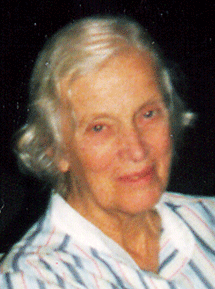- History Home
- People, Leadership & Service
- A Legacy of Excellence
- History & Impact
- Meetings Through the Years
- Resources
Biography - Dorothy Crowfoot Hodgkin (1910-1994)Biography | Publications | Curriculum Vitae | Videos | Slides | Articles | Obituary
Dorothy Crowfoot Hodgkin (1910-1994) was awarded the 1964 Nobel Prize for Chemistry. Read a summary of Hodgkin's life here. See the Videos page for more information about Hodgkin's contributions to science. Hodgkin's academic family tree
Dorothy Hodgkin’s Magnum OpusAs far as science anniversaries go, there’s plenty to celebrate in 2019. It is Alexander von Humboldt’s 250th birthday and the 50th anniversary of the Nobel Prize in Physics awarded to Murray GellMann (who passed away a few months ago) “for his contributions and discoveries concerning the classification of elementary particles and their interactions”. Chemistry milestones include the discovery of phosphorus by Hennig Brand 350 years ago, the 150th anniversary of the introduction of the periodic system by Dmitri Mendeleev, and the birth centennial of Primo Levi, author of The Periodic Table, a collection of short stories inspired by various episodes of his life, including nearly a year as a prisoner in Auschwitz. Readers of RefleXions may recognize 1969 as the year when the legendary Dorothy Crowfoot Hodgkin (1910-1994) published her seminal paper describing the crystal structure of insulin, the hormone that regulates the absorption of glucose into liver, fat, and skeletal muscle cells (M.J. Adams et al., Nature 1969, 224, 491-495). This was the successful conclusion to an effort that started almost 35 years earlier, shortly after the beginning of her independent career at the University of Oxford in 1934. In the intervening years, Hodgkin solved the molecular structures of several important biomolecules, including penicillin (1945) and vitamin B12 (1955), and was honored with the 1964 Nobel Prize in Chemistry “for her determinations by X-ray techniques of the structures of important biochemical substances.”
But let’s go back to the insulin story. Discovered by Frederick Banting, Charles Best, and colleagues at the University of Toronto in 1921, and first crystallized by John Abel in 1926, insulin was a molecule of unprecedented complexity in 1934. In fact, the primary structure of insulin, which consisted of two amino acid chains linked by two disulfide bonds, was only established in the early 1950’s by the British biochemist Frederick Sanger (1918-2013) who, incidentally, is the only recipient of two Nobel Prizes in Chemistry (in 1958 and 1980). In any event, the development of the isomorphous replacement method by Max Perutz and John Kendrew in the 1960’s provided much-needed impetus to the project and Hodgkin finally put all the pieces of the puzzle together 50 years ago. ACA RefleXions, Winter 2019. |


